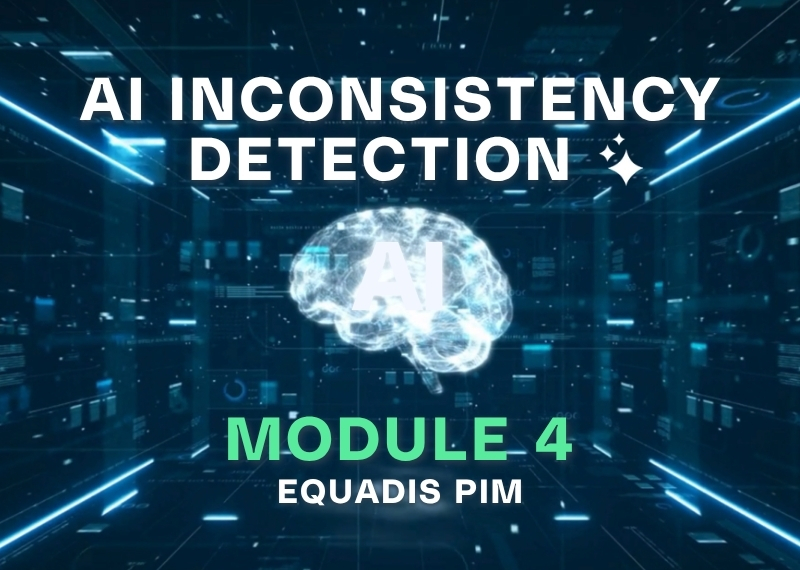Table of contents
Using AI is one thing, using it well is another. Faced with demanding consumers and ever-increasing competition, mastering the art of prompting has become an essential skill for retail players. Knowing how to prompt effectively means turning AI into a true performance lever to enrich and secure your product data, accelerate your time-to-market, and enhance the customer experience. In this article, discover all the keys and foolproof techniques to make your prompts truly effective tools.
Prompt and prompt engineering: what are they?
A prompt is the instruction given to artificial intelligence to generate a response. It can be a question, a directive, or a request for text, an image, code, etc. In other words, it’s how we “converse” with AI. A prompt can be as short as a single sentence or several paragraphs long. The latest models can even process inputs such as images and audio.
Prompt engineering, on the other hand, is the art of formulating and optimizing these instructions. It’s a strategic skill, akin to briefing a colleague: defining the context, role, objectives, expected format, tone, constraints, and so on. When well-crafted, a prompt serves as a guide, steering the AI’s response toward what’s most useful and precise for the user.
How to prompt effectively in retail in 6 steps
Mastering prompt engineering means avoiding generic results and obtaining tailored content. Here are six rules to follow:
1. Be clear and precise about your need
A vague prompt may generate answers with little operational value. The more specific the request, the more actionable the result.
Example:
– Instead of: “Give me tips to improve my sales.”
– Try: “Suggest 5 concrete actions to increase the visibility of my organic products in supermarkets, considering current consumer trends.”
2. Provide context
AI doesn’t have built-in business memory: you must define its role and environment. Whether you’re a retailer, supplier, or e-merchant, explain the objective (catalog optimization, SEO improvement, competitive analysis, etc.).
Example: “Act as a food e-commerce expert. What advice would you give to a retailer who wants to optimize product descriptions to increase conversions?”
3. Specify the expected format based on the use case
You expect an answer, but in what form? A price comparison table, a marketing plan, an optimized product sheet, a trend analysis, a script for a social media post? Specifying the format saves time.
Example: “Show me the differences between these three marketplaces in a table, with one column for Advantages and another for Disadvantages.”
4. Define the tone and communication channel
A product sheet, a performance report, and a LinkedIn post don’t share the same tone. By specifying this, you’ll receive content directly adapted to your objective and channel.
Example: “Write this product description in 3 short, benefit-focused sentences with an accessible tone. Take inspiration from e-commerce websites.”
Editor’s note: Equadis PIM’s Content Generation AI lets you choose the tone, target, sales channel, and add a precise prompt. It can generate, rephrase, simplify, or correct text in bulk, instantly, across all fields of your product sheets!
5. Use concrete examples
AI performs better and delivers more precise results when you impose constraints: length, business vocabulary, SEO keywords, etc.
Example: “Write a product description of no more than 50 words for a ‘wireless keyboard,’ including the keywords: ergonomic, sleek, autonomy.”
6. Refine and improve your request
Prompts evolve through iterations: you can ask the AI to expand and go into more details on a product category, local market, or customer segment.
Example: “Develop further the section on the benefits of this moisturizing cream.”
Stay vigilant!
Effective prompting maximizes AI performance, but some limitations must be kept in mind:
- Hallucinations: AI can invent or make mistakes; an AI-powered PIM secures usage with reliable product data.
- Biases: Models sometimes reflect stereotypes; human expertise remains essential for context.
- Confidentiality: Avoid including sensitive data in a prompt; PIM integration ensures a secure environment.
Towards an AI-enhanced PIM: Equadis’ tailored solution
At Equadis, we integrate AI directly into our omnichannel PIM, in partnership with Google Cloud. Four built-in AI modules are transforming product data management:
- AI Translation: the key to internationalization
- AI Content Generation: boosting the impact of your omnichannel data
- AI DocExtract: intelligent extraction of information from documents or visuals
- AI Inconsistency Detection: identifying errors and discrepancies in just one click
In practical terms, a brand with a catalog of more than 1,000 SKUs can save weeks of work, secure its product data, and deliver a personalized shopping experience tailored to each target, country, and sales channel.
Want to see how AI can enrich your product data and take your data management to the next level? Let’s talk.




